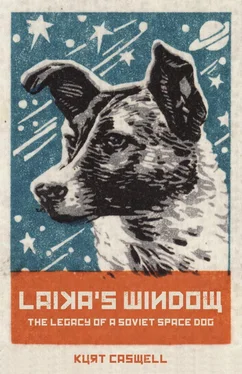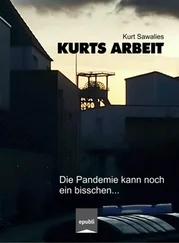¤
In 1960 the Soviet government gave Korolev a house in a forested park in north Moscow near the present-day Memorial Museum of Cosmonautics. He lived there until his death in 1966, and these were his most productive years. He is said to have worked sixteen to eighteen hours a day, spending some six months away from home each year. But when he was working in Moscow, he came home every day for lunch. He did not care for foods that required effort to eat, fish with bones, for example, a waste of time to him. He loved pickled herring. He was a reader, and like Tsiolkovsky, Goddard, and von Braun, he loved science fiction, especially Ivan Euremov’s novel Andromeda’s Nebula and the novels of H. G. Wells and Jules Verne. He kept the works of Leo Tolstoy among his prized books, and he could recite passages from War and Peace . Like the great novelist himself, Korolev kept a set of dumbbells in his study, believing in physical exercise to sharpen the mind.
Korolev was the kind of person other people orbited around: his second wife, a few rumored mistresses (for he had a great fondness for women, and they for him), his co-workers, the first cosmonauts, dignitaries and officials of the government. Korolev was very close to Gagarin, who often came to the house to be near him. The house was alive with such people, passing in and out, stopping by for a talk or coffee, a meal or a movie. Korolev kept a reel-to-reel projector in the front sitting room, rare in those days in the Soviet Union (or anywhere, for that matter), and he used any excuse to assemble a party. There in the sitting room he also kept a television. After his first heart attack in December 1960, he avoided the excitement of news and press events. During the great celebrations of Gagarin’s successful flight into orbit in 1961, Korolev stayed at home to watch it on TV.
Korolev had great taste in art, or so I was told by my guide when I visited his Moscow home. Hung on the walls are several paintings he acquired not long before his death, evidence of a premonition, my guide said. I asked after the titles and the names of the artists. One work, entitled simply Landscape , was touted as the work of a French painter of some renown, but my guide could not name him. Two other paintings, both set at dusk, are entitled Evening Landscape and Evening Landscape by the River . For both, the painters were unknown. The mood of these paintings is dark, to be sure, a setting sun and a foreground of failing light. Fitting scenes for a man fixated on vanishing.
At the top of the stairs before the entrance to his study is a framed map of the moon, perhaps six feet by six feet in size, a handcrafted original. It was given to Korolev by a scientist in Saint Petersburg to honor his dream of planetary exploration. Korolev believed the moon to be rocky and solid, that a spacecraft could land on it and a cosmonaut could walk on it. Others during this time believed the moon to be gaseous, like the gas giants Jupiter and Saturn. The first spacecraft to land on the moon, Luna 2 , which Korolev’s team launched in 1959, proved he was right. Further into the study is a globe, a gift from the rocket engineer Valentin Glushko, who is said to have sent Korolev to prison but afterward became his boss (for a time), his colleague, and his friend. On the globe’s stand, Glushko has written: “My dear friend—I wish you to see the Earth like this from space.”
Korolev’s health problems, which began during his imprisonment, were troubled by his impossible work schedule and unremitting stress. He suffered from a form of kidney disease, cardiac arrhythmia, an inflamed gallbladder, hearing loss (likely from test-firing rocket engines), and intestinal bleeding. On the outside people saw a hale and powerful man who was at the extreme edge of human ingenuity and industry, but his body was failing. In his book Korolev , James Harford cites a letter Korolev wrote to his second wife, Nina Ivanovna, during one of his stays at the launch facility at Baikonur: “I am unusually deeply tired, and sometimes the little heart aches a bit.” Korolev dared not take any rest, however, for he was convinced that without him to drive the newly formed space program, Khrushchev would pull the funding and cancel it. So he worked ever harder, despite knowing he should not. “I can’t work like this any longer,” he once said to his wife.
To correct a bleeding polyp in his large intestine, on January 5, 1966, Korolev checked into the Kremlin hospital, a facility catering only to top Soviet state and Communist Party officials. The long black wool overcoat and shoes he wore that day are in the closet near the front door of his house. In the hospital, Korolev underwent a series of tests and then into surgery on January 14. In his book, Harford offers the details of Korolev’s death as told by his daughter, Natasha. During the routine surgery, Korolev began to bleed, a persistent bleeding that required his surgeons to cut into his abdomen. There they found a cancerous tumor and went to work to remove it. Korolev was under an anesthetic mask for eight hours, and after the surgery he never regained consciousness. Had the surgeons intubated him, Harford suggests, he might have made it, but his broken jaw from the torture he endured in the gulag had not healed properly and prevented the tube from going in. Still, the tumor was malignant, and according to Harford, “Korolev would not have lived more than a few months, even if he had not been operated on.” His body was cremated and his ashes interred with honors in the Kremlin Wall. He was fifty-nine years old.
Inside the front door of Korolev’s Moscow home, at the foot of the stairs on a table near the telephone, is a sculpture, To the Stars , a replica of a larger original that is mounted on the grounds of the Theater of the Soviet army in Moscow. The first three cosmonauts in space (Gagarin, Titov, and Nikolayev) presented the sculpture to Korolev as a gift. It features the signatures of all eleven cosmonauts who flew in space during Korolev’s lifetime. The sculpture is of Prometheus, his left arm outstretched, releasing a rocket to the stars. He leans dramatically forward, his body bare but for a cloth draped around his waist that flows and snakes about him. The rocket is to go ever upward, and Prometheus has become part of the rocket, launching into the cosmic void on a voyage of discovery and adventure. Behind the sculpture is a staircase leading up to Korolev’s study. The staircase rises a few steps to a landing, where it turns and rises again past a bright and sunny window looking out into the forested park beyond the house. Korolev would often sit on the second step from the top and look out the window through the leaves of the trees. It was here, my guide told me, that Korolev had his best ideas.
¤
In 1966, a month after Korolev’s death, the Soviets launched a final space dog mission. Both the US and the USSR had turned their sights on landing men on the moon, and this flight would test hardware and life-support systems on an extended stay in space. Ugolyok (Little Piece of Coal or Ember) and Veterok (Little Wind), along with other biological experiments, were sent into orbit on Kosmos 110 for a twenty-five-day mission. The dogs would be pushed into an elliptical orbit with an apogee of 560 miles and pass through the lower Van Allen Belt, where radiation levels were measured between six and twenty-five times higher than on flights in lower orbits. In addition to gathering data on the effects of microgravity on the body during a long flight, the team would also come to better understand the effects of exposure to such high doses of radiation.
Ugolyok was a fluffy dog, dark as coal as her name indicates, and bearing a rounded mane about her face, ruffed out like a male lion. She was tall and handsome, a dog of appealing conformation, a dog you might want to take home. Veterok, with her short legs and shorter hair, her ears bent over in most photographs, appears as a kind of sidekick, a dog you would keep only if you had another. For that, they were suitable companions. Video footage of the two dogs on a walk (the caregiver, a woman with a beehive hairdo and wearing a white lab coat and black heels) shows them to be energetic, playful, dogs at the peak of their youth. Turkina notes that both dogs had other names before their flight. Ugolyok had been called Snezhok, which means Snowball, an irony, since she was almost all black. And Verterok had been called Bzdunok, which means Little Fart, perhaps a commentary on her personality or maybe her behavior. Despite the name change, someone, it seems, thought to preserve the humor, as Veterok’s name changed from “little fart” to “little wind.”
Читать дальше












